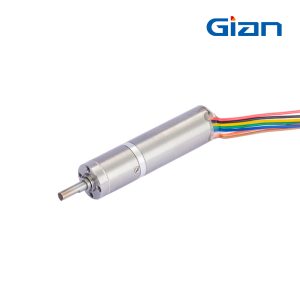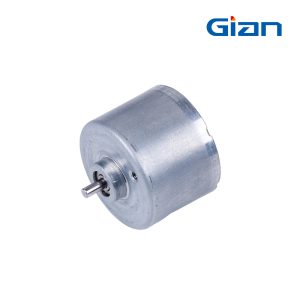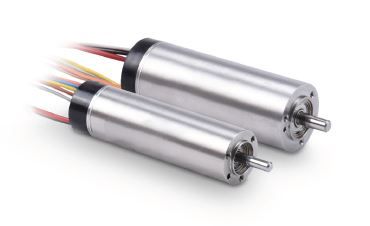Slotless Brushless DC (BLDC) motors have gained popularity across industries due to their smooth operation, low noise, high efficiency, and compact design. However, selecting the right slotless BLDC motor for your application can be a challenging task given the variety of options available. This guide walks you through the critical factors to consider when choosing the right slotless BLDC motor to meet your specific requirements.

Types of Slotless Brushless DC (BLDC) Motors
Slotless Brushless DC motors are a specialized category of BLDC motors known for their high efficiency, smooth operation, and lightweight designs. Unlike slotted motors, these motors have no slots in the stator, reducing cogging torque and enhancing performance in applications requiring precision and reliability. Here’s an overview of the major types of slotless BLDC motors:
Coreless Slotless BLDC Motors
Coreless slotless BLDC motors eliminate the traditional laminated iron core found in standard motors. Instead, their windings are wound in a honeycomb or basket structure, supported by a lightweight, non-magnetic material.
Key Features:
- Low Inertia: Exceptional responsiveness due to the absence of an iron core.
- Efficient Design: Reduced eddy current losses improve efficiency.
- Compact Size: Ideal for space-constrained applications.
Applications:
- Precision robotics, medical devices, and high-speed scanners.
Outrunner Slotless BLDC Motors
Compared to inrunner motors, outrunner slotless motors have a bigger diameter and more torque since their rotor is positioned around the stator.
Key Features:
- High Torque Density: The larger rotor diameter produces more torque at lower speeds.
- Smooth Operation: Reduced cogging torque for vibration-free performance.
Thermal Efficiency:
- Better heat dissipation due to the outer rotor structure.
Applications:
- Drones, electric bikes, and industrial automation systems.
Inrunner Slotless BLDC Motors
Because the rotor of an inrunner slotless motor is housed inside the stator, it is more compact and appropriate for high-speed applications.
Key Features:
- High-Speed Capability: Made for uses that call for fast rotational speeds.
- Compact Form Factor: Small size and lightweight design.
- Precise Control: Smooth operation with minimal electromagnetic interference.
Applications:
- RC vehicles, centrifugal pumps, and precision tools.
Pancake Slotless BLDC Motors
Pancake slotless motors feature a flat, disc-like design, making them highly compact and suitable for applications requiring a slim profile.
Key Features:
- Thin Form Factor: Ideal for applications where height is limited.
- Axial Design: Efficient power transfer due to axial flux orientation.
- Lightweight: Reduced material usage without compromising performance.
Applications:
- Aerospace systems, robotics, and precision instruments.
Axial Flux Slotless BLDC Motors
Axial flux motors use a magnetic flux path aligned along the motor’s axis rather than radially. Their slotless design enhances efficiency and reduces losses.
Key Features:
- High Efficiency: Optimized magnetic path minimizes losses.
- Compact Design: It makes integration into confined locations possible.
- Flexible Configurations: Suited for high torque and low-speed applications.
Applications:
- Electric vehicles, wind turbines, and compact industrial machinery.
Radial Flux Slotless BLDC Motors
In radial flux motors, the rotational axis is perpendicular to the magnetic flux. Their slotless design lowers noise and vibration.
Key Features:
- Torque Optimization: Excellent performance in medium to high-speed ranges.
- Low Noise: Slotless configuration minimizes electromagnetic noise.
- Wide Range of Sizes: Customizable for diverse applications.
Applications:
- HVAC systems, automotive systems, and automation equipment.
Understand Your Application Requirements
The first step in choosing the right motor is to define your application needs clearly. Consider the following:
Load Characteristics
- Torque Requirements: Determine the starting torque, running torque, and peak torque needed for your application.
- Speed Range: Understand the operating speed range (RPM) required, including maximum and minimum speeds.
- Load Inertia: Know the load’s inertia, as it impacts the motor’s ability to start, stop, and reverse quickly.
Environmental Conditions
- Operating Environment: Will the motor be used in extreme temperatures, wet conditions, or environments with dust or debris? Select a motor that has the appropriate ingress protection (IP) ratings.
- Thermal Management: If the application generates heat, you may need motors with efficient cooling mechanisms or thermal protections.
Space and Weight Constraints
- Slotless BLDC motors are known for their compactness. Evaluate if a smaller form factor or lighter weight motor is necessary for your design.

Motor Specifications to Evaluate
When comparing motors, focus on these key specifications:
Power Rating
- Determine the power (in watts or kilowatts) required for your application. This is a combination of the torque and speed.
Efficiency
- Slotless BLDC motors are highly efficient, but the exact efficiency rating can vary. Higher efficiency means reduced power loss and better thermal performance.
Voltage and Current Requirements
- Make sure your power source can supply the motor’s voltage and current needs.
Torque Ripple
- One of the significant advantages of slotless BLDC motors is the lack of cogging torque, leading to minimal torque ripple. Choose a motor with verified low ripple characteristics if smooth operation is critical.
Speed-Torque Curve
- Evaluate the motor’s speed-torque characteristics to ensure it can provide consistent torque across the desired speed range.
Thermal Resistance
- Ensure the motor can handle the heat generated during operation, especially if used in high-power applications or continuous duty cycles.
Controller Compatibility
Slotless BLDC motors require electronic controllers for commutation and operation. Verify the compatibility of the motor with available controllers:
Sensor vs. Sensorless Control
- Sensor-Based Motors: Use Hall-effect sensors or encoders for precise position and speed control, suitable for applications requiring high accuracy.
- Sensorless Motors: Depend on back electromotive force (EMF) feedback, which is perfect for systems that are simpler and less expensive.
Controller Features
- Check for features like programmable settings, overload protection, and communication protocols (e.g., CAN, UART, or SPI) that match your system’s requirements.
Assess Build Quality and Materials
The materials and construction of the motor directly affect its performance and durability:
Magnet Material
- Motors with rare-earth magnets (e.g., neodymium) provide high torque and efficiency but come at a higher cost. Ferrite magnets are more affordable but may have lower performance.
Winding Design
- Evaluate the quality of the stator windings. High-quality copper windings ensure better performance and durability.
Rotor Design
- Choose between inner-rotor or outer-rotor configurations based on application needs. Outer-rotor designs are common in drones and gimbals due to their higher inertia and stability.
Design Considerations for Slotless BLDC Motors
When designing or selecting a slotless BLDC motor, consider the following:
- Winding Techniques: Careful winding and placement are essential to achieve optimal performance.
- Controller Compatibility: Particularly with regard to voltage and current ratings, the motor controller should be in line with the motor’s specifications.
- Thermal Management: Incorporate cooling solutions like heatsinks or active cooling if the application involves prolonged use.
- Material Selection: Use high-quality magnets and winding materials to ensure durability and efficiency.
- Cost vs. Benefit: Assess whether the benefits of a slotless design justify the higher initial cost for your application.
Evaluate Cost vs. Performance Trade-offs
Slotless BLDC motors are generally more expensive than slotted counterparts due to their advanced design and manufacturing complexity. To justify the cost:
- Ensure the application demands benefits like low noise, high efficiency, or zero cogging torque.
- Instead of focusing only on the original expenditure, take into account the entire cost of ownership, which includes maintenance and operating effectiveness.
Consult with Manufacturers and Suppliers
- When in doubt, consult manufacturers or suppliers to ensure you’re choosing the right motor for your application. Be ready to discuss specifics of your project, such as:
- The necessary performance requirements
- Operating conditions
- Design constraints (size, weight, or mounting options)
Compare Key Features Using a Decision Matrix
Create a decision matrix to compare potential motors based on your criteria. Below is an example matrix to evaluate three motors:
| Criteria | Motor A | Motor B | Motor C |
| Power (W) | 500 | 450 | 600 |
| Efficiency (%) | 92 | 89 | 94 |
| Noise (dB) | 25 | 30 | 22 |
| Cost ($) | 300 | 250 | 350 |
| Torque Ripple | Low | Medium | Low |
| Thermal Resistance | Good | Average | Excellent |
Common Mistakes to Avoid
- Underestimating Torque Needs: Always account for startup and peak torque to avoid overloading the motor.
- Neglecting Controller Compatibility: Ensure your controller supports the motor’s voltage, current, and communication needs.
- Ignoring Thermal Management: Slotless motors may require additional cooling solutions for high-power or continuous-duty applications.
Case Study: Selecting a Motor for a Drone Application
Application Requirements:
- Smooth operation for camera stabilization
Lightweight and compact
High torque at low RPM for precise control
Chosen Motor: A slotless BLDC motor with:
- Outer-rotor design for added stability
- Low torque ripple for smooth operation
- High-efficiency ratings to conserve battery power
Conclusion
Choosing the right slotless BLDC motor involves a detailed evaluation of application requirements, motor specifications, and performance trade-offs. You can select a motor that meets your specific needs by focusing on key factors like torque, speed, efficiency, and controller compatibility. Collaborating with manufacturers or using a decision matrix can simplify the selection process.
With the right slotless BLDC motor, your project will benefit from smooth operation, low noise, and reliable performance, ensuring success in demanding applications.












